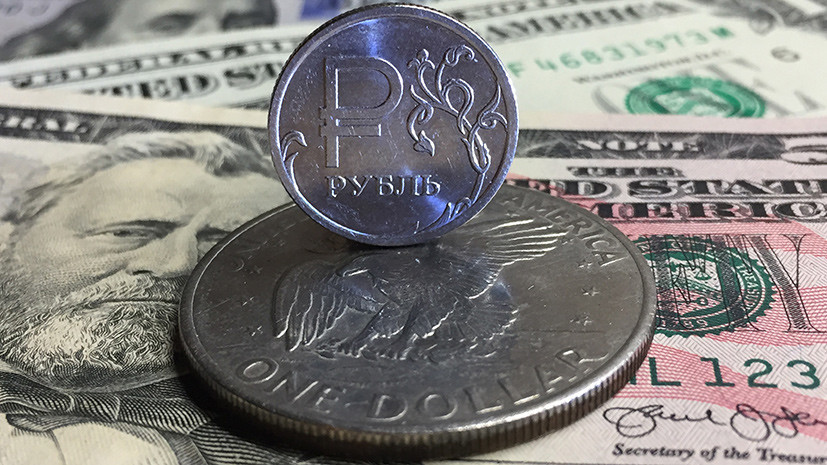On Thursday, September 19, the Mosbirge ruble traded in different directions - from weakening to strengthening. So, the US dollar rate set at 64.1 rubles during the day, but by evening trading it amounted to 63.8 rubles. The euro, on the contrary, was trading at 70.9 rubles, and by the evening it fell to 70.6.
The official exchange rate of the Central Bank on September 20 amounted to 64.22 rubles per dollar and 70.94 rubles per euro.
The ruble was affected by the weakening of the dollar against major world currencies - the euro, the British pound, the Swiss franc, the Japanese yen, etc.
The national currency of the United States began to get cheaper after the news about the results of the meeting of the top management of the Central Bank of the country. On the eve of the leadership of the Federal Reserve lowered the interest rate by 25 basis points to 1.75-2% per annum.
International investors had expected such an outcome, but the uncertainty about the Fed's future policies has alerted market players. As it became known on September 18, out of 17 top managers of the Federal Reserve seven are in favor of another rate cut before the end of the year (to 1.5-1.75% per annum), five are waiting for the current level to remain, and five more consider it necessary to raise the rate back - up to 2-2.25%. This is stated in the materials of the Federal Reserve.
As explained by RT portfolio manager of QBF Denis Ikonnikov, the Fed leadership does not have unity on the prospects for the US economy. So, some representatives of the regulator fear a decrease in the US GDP growth rate and insist on an even greater reduction in the rate, while others still do not see the need for it.
Last year, the Fed raised the base rate four times. At the same time, Donald Trump has repeatedly criticized the actions of the regulator and personally his head Jerome Powell. According to the US president, the country's economic situation did not require such a tightening of monetary policy.
After Trump’s accusations and fears of an economic downturn, the Fed's top management changed tactics and lowered the rate at a July meeting. The last time the regulator made this decision was in December 2008 to stimulate the economy in the midst of the global financial crisis.
Market participants expect another interest rate cut before the end of the year due to the threat of a new recession in the United States. According to the Chicago Mercantile Exchange CME Group, investors estimate the likelihood of such a decision at 60%.
Reducing the interest rate of the Fed reduces the attractiveness of the dollar to investors. Therefore, players in the global financial market are beginning to buy more actively the currencies and securities of those countries where high interest rates are set. Thus, players can get increased return on investment.
“The easing of monetary policy by the US Federal Reserve is a positive factor for all currencies in emerging markets, and in particular for the ruble. Amid the influx of foreign money into Russian debt and stock markets, the dollar will fluctuate in the range of 62.5–67 rubles until the end of autumn, ”Finam analyst at Sergey Finnykh explained in an interview with RT.
Zero percent
Donald Trump calls on the Fed leadership to completely zero the interest rate. The President believes that such a solution will help the States cope with the problem of high public debt of $ 22.5 trillion.
“The Federal Reserve should set our interest rates at zero or lower, after which we will begin refinancing our debt. The cost of interest payments must be reduced, and the terms of payments must be increased, ”Trump wrote on Twitter.
However, on September 18, during a press conference, Jerome Powell announced the Fed's intention to act regardless of Trump's criticism. As expected, the regulator will decide on another rate cut only in the event of a new wave of slowdown in the US economy.
“It will be possible to talk about a full-fledged cycle of lowering rates when there is a clear threat of recession, accompanied by rising unemployment and falling consumer activity. In this case, rates can be reduced to zero, which can lead to a cheaper dollar, ”Allen Sabitov, an analyst with Freedom Finance, said in a conversation with RT.
Course equilibrium
RT analysts interviewed add that the Russian currency is also supported to some extent by the rise in world oil prices. The cost of raw materials of the Brent benchmark brand at the auction on September 19 immediately increased by 3% - up to $ 65.3 per barrel.
As an expert of the company International Financial Center Gaydar Hasanov noted in an interview with RT, recently the dependence of the ruble on the cost of oil has decreased by 45%. Therefore, the Russian currency only partially responds to fluctuations in commodity quotes.
Analysts noticed that in the near future, investors will monitor the development of the situation around oil production in Saudi Arabia. Recall, on September 16, as a result of an attack on the country's refineries, oil production in the kingdom fell by half.
“The way Saudi Arabia will restore its fields and refineries will determine the further dynamics of world oil prices. This factor may affect the movement of the ruble. So far, the exchange rate of 65 rubles per dollar seems to be fairly balanced, ”said Denis Ikonnikov.
As Dmitry Alexandrov, the chief strategist of UNIVER Capital, noted in an interview with RT, adjustments in the US trade war with China may affect the increase in oil prices. In the event of a truce, investors will begin to invest in the assets of developing countries. According to Aleksandrov, such a development of events may lead to a decrease in the dollar exchange rate to 61.5–62 rubles by the end of the year.

